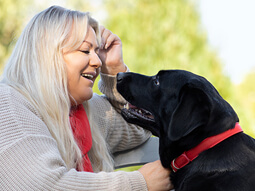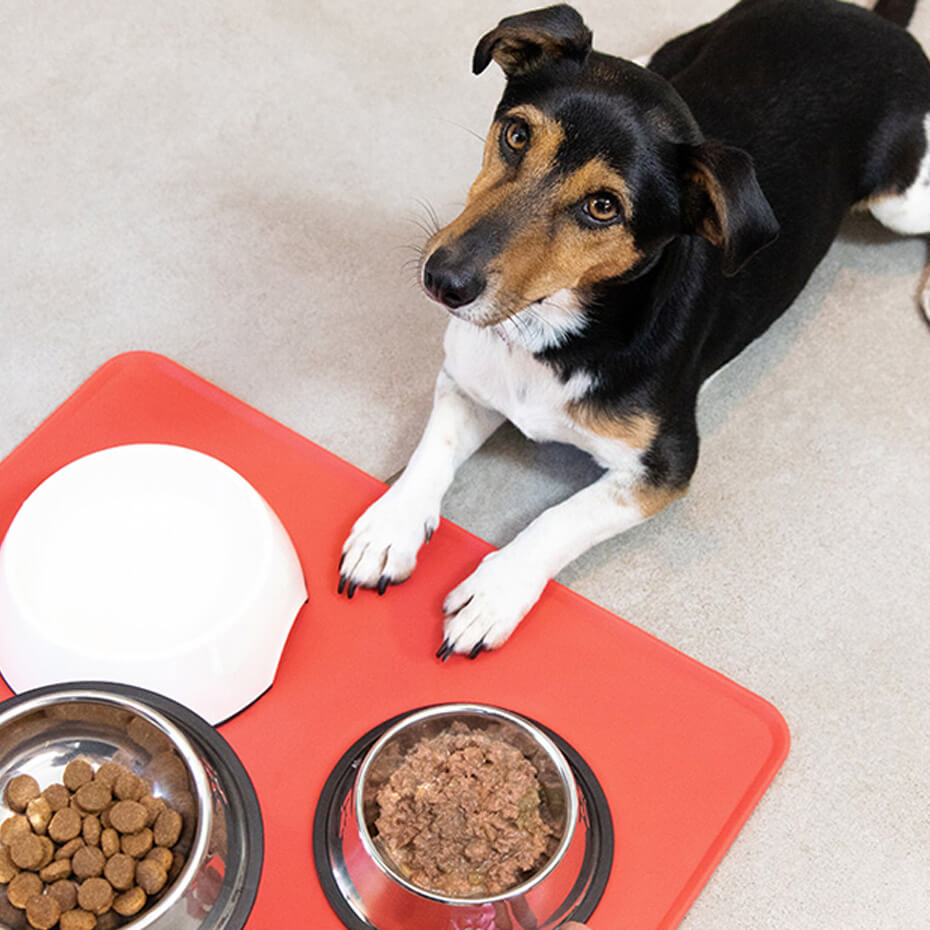
When it comes to being stuck inside, there’s no doubt that pets can make the time at home feel a whole lot more enjoyable.
They’re there when we need to vent or just need a good cuddle, and their care provides a productive outlet that’s beneficial to both pets and people.
But being stuck at home with your pet can also present its share of challenges. Our pet behaviourists offer some tips on how to keep your pet happy and engaged when you’re stuck inside.
10 Tips & Tricks for Keeping Pets Happy & Healthy Indoors
1. Stick to Their Routine
Your routine has likely been disrupted in some pretty significant ways. In times like these, it can be tempting to let your pet’s routines fall to the wayside, too.
Purina behaviourist Dr Annie Valuska warns against this: “It’s important to try to keep your pet’s routine as intact as possible. Feeding, potty, and walks should all happen when they normally do, and if your dog is used to going in the car, it’s not a bad idea to continue to take them for short drives.”
She also reminds us that continuing to ask for good manners, like sitting before going through a doorway or not begging for table scraps, is another important way to maintain consistency in your pet’s routine.
2. Be Intentional About Rest Time
Your pet may be used to having time to himself while the family is away, so try to give him plenty of rest time throughout the day.
As Purina behaviourist Dr Francois Martin reminds us, “It is not a good idea to change your pet’s routine with a lot of socialisation. Pets are not kids. Owners don’t have to keep them busy with things to do all day.”
Parents, breathe a sigh of relief—your kids may need activities to fill their days, but your cat or dog will be just fine, and will even benefit from having some quiet time.
3. Let Them Chew it Out
For those conference calls, homeschooling sessions, or just moments when you need some rest, it can be helpful to give your pet a long-chew treat to help keep him entertained.
If your pet has a tendency to scarf down his treats, Kongs and other sturdy toys can be filled with peanut butter and then frozen for a longer-lasting distraction.
Dr Séverine Ligout, a Purina behaviourist, reminds us that while these treats can be a fun activity for your pet, it can also be easy to overfeed them. Keep calorie counts in mind, and compensate for extra treat calories by feeding a little less at mealtime.
4. Exercise, Exercise, Exercise
Keep nerves in check and channel nervous energy into a productive outlet—exercise. Staying active during this time is as beneficial for you as it is for your pet.
You may not be able to take your dog to the dog park for exercise, but you can still find ways to get his energy out. Even a trip to the mailbox can provide a little exercise. If you’re stuck inside, clear away some furniture to make room for a game of fetch or tug of war.
Get out in the backyard if you have one and play a game of chase. Purina behaviourist Serena Juma recommends using exercise as another way to reinforce your pet’s schedule. “Have planned play sessions at around the same time each day,” she advises.
“This will encourage your pet to follow routine, while also providing physical and mental stimulation, as well as promoting the human-animal bond.”
5. Play Some Mind Games
Another great way to tire your pet out is with mental stimulation, like teaching them a new trick or two! Have you always wanted your dog to be able to roll over or for your cat to dance? Now is the perfect time for those lessons.
“Just like people, pets experience what we call the ‘Eureka Effect,’ or the emotional response to problem solving,” Dr Ragen McGowan, Purina behaviourist, explains. “That ‘ah ha’ moment when you finally figure something out. You feel a positive surge of emotions. Our pets experience this as well.”
You can also use feeding time as a way to mentally enrich your pet’s day. Scatter their food around the house and let them use their sense of smell to find it, or incorporate a puzzle toy into feeding to give them a little mental challenge.
6. Be a Considerate Roommate
Nobody appreciates a roommate who is always making noise, and your pet is no exception! Now that you and your pet are spending a whole lot of quality time together, be mindful that pets can hear a lot better than us—and try to keep excessive noise to a minimum.
This will give them some time to rest. “If background noise is a must, consider subbing in some classical music (which studies show can help calm pets) for the TV, podcasts, or radio occasionally,” Dr Valuska suggests.
7. Get Kids Involved
If you have kids in your home, get them involved in keeping your pet happy and healthy indoors. Now is a great time to reinforce good pet etiquette and help kids understand pet body language. It can also be fun to involve pets in your child’s learning.
“Kids still need to learn, and pets have been shown to help children in some areas of learning (e.g., reading),” Purina behaviourist Dr Sandra Lyn shares. “If the pet is amenable, then implement and encourage reading-to-pets sessions as part of your child’s routine.”
8. Stick to a Healthy Diet
You may be indulging in boxed mac and cheese and one too many brownies these days, but that doesn’t mean your pet can’t stick to their healthy diet.
“Don’t start feeding table scraps just because your ‘table’ happens to be your couch these days,” Dr Valuska advises. Continue your pet’s feeding schedule and stick to providing their regular food as much as possible.
If you’re feeding your pet more treats than usual to reward them for being such a great companion (because let’s face it, they deserve it!), keep in mind that no more than 10 percent of a pet’s daily calories should come from treats.
9. Create a “Safe Spot”
Your pet may need some personal space to feel safe and comfortable during a time when there are suddenly more people around. This is especially true for cats, but dogs can benefit from having a designated “safe space” as well.
“If you think your pet is overwhelmed by all the sudden ‘togetherness,’ make sure they have a safe space the whole family respects,” Dr Valuska says. “When they’re in there, they are off-limits—it can even help to consider them ‘invisible’ in that space.”
This helps little pet lovers understand that pets who are in their special place are to be left alone until they are ready to play.
10. Get Creative!
To keep pets occupied and happy during a time when venturing out for new toys isn’t feasible, Dr McGowan recommends thinking outside the box with DIY toys and enrichment.
“Provide fun toys that your dog or cat has permission to destroy,” she suggests. “This can be something like a cardboard tube with kibble hidden inside, or a plastic bottle they can chew through to get treats from within.”
Having a productive way to get any destructive energy out can be beneficial—both for your pet and your leather shoes.




